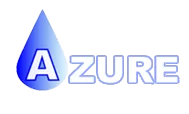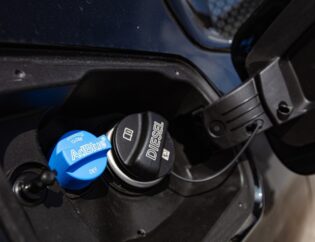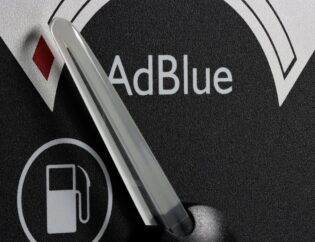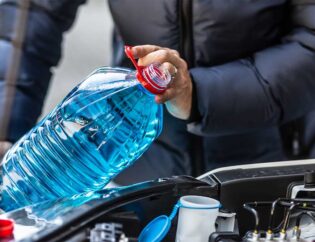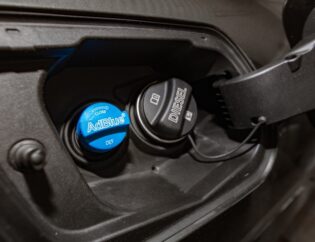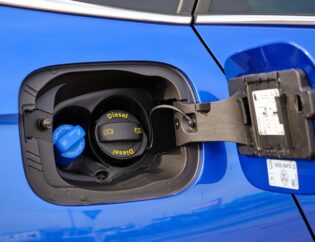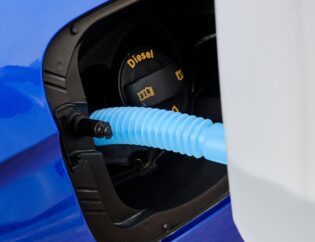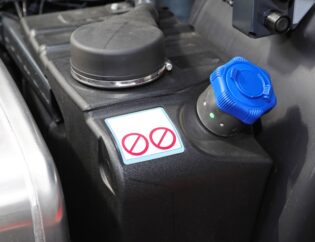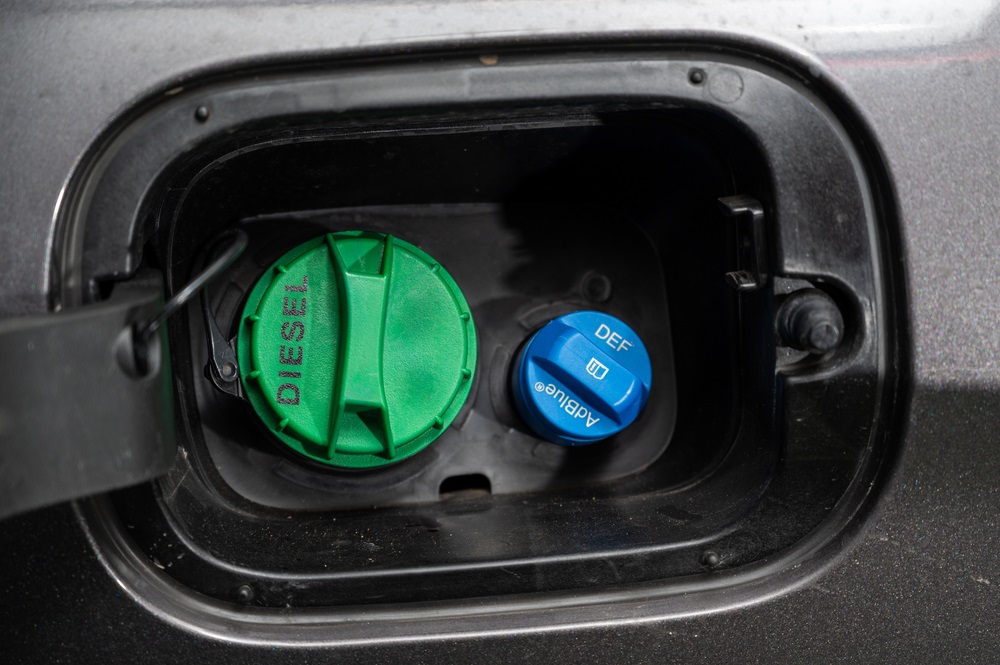
The purpose of DEF is to reduce nitrogen oxides (NOx) from diesel vehicle exhaust. DEF breaks down into ammonia when it is put into the exhaust stream, and it then combines with the NOx gases to produce nitrogen and water vapor. The SCR system’s catalyst is the site of this reaction, which successfully lowers NOx emissions.
Most modern diesel engines are designed with SCR systems and require DEF to meet emissions regulations. DEF is essential for diesel trucks and other heavy-duty vehicles to comply with increasingly strict emissions standards. DEF helps reduce environmental impact while allowing diesel engines to maintain power and fuel efficiency. Let’s learn more in this blog with Azure Chemical.
Contents
Why DEF is Important
Diesel Exhaust Fluid (DEF) is an important liquid that helps reduce the amount of air pollution emitted from diesel engines.
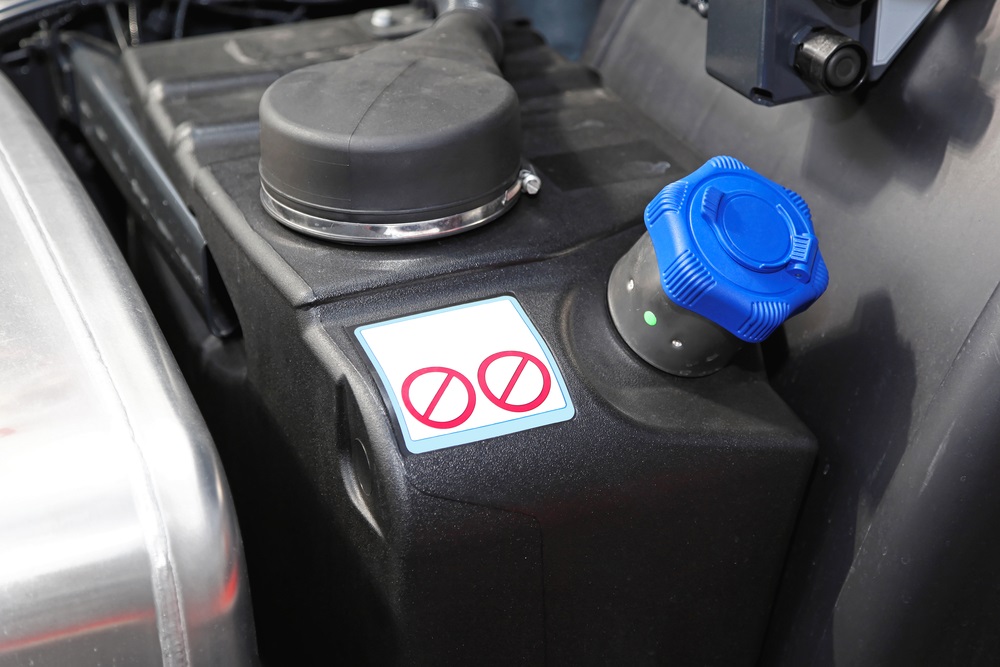
Using DEF allows diesel engines to meet emissions regulations and standards by converting harmful nitrogen oxide (NOx) gases into harmless nitrogen and water vapor.
Diesel engines would release much more NOx and other pollutants into the atmosphere if DEF were not present. The environment and the public health may be negatively impacted by these contaminants. Acid rain, ground-level ozone, and smog generation are all facilitated by NOx and can lead to respiratory issues.
Small volumes of DEF are injected into the exhaust stream to break down NOx gases prior to them exiting the tailpipe. The NOx emissions are reduced by up to 90% by this catalytic reaction.
In addition to meeting emissions regulations, DEF helps keep diesel engines running properly. The fluid prevents buildup on engine parts and filters and helps engines burn fuel more efficiently. Proper DEF levels are required to pass emissions tests during vehicle inspections.
In summary, DEF is essential for modern diesel engines to limit air pollution, operate efficiently, and comply with emissions regulations. DEF has become a standard practice for diesel fleets across North America and worldwide.
Checking DEF Level
You should regularly check your truck’s DEF level to ensure adequate supply and avoid running out.
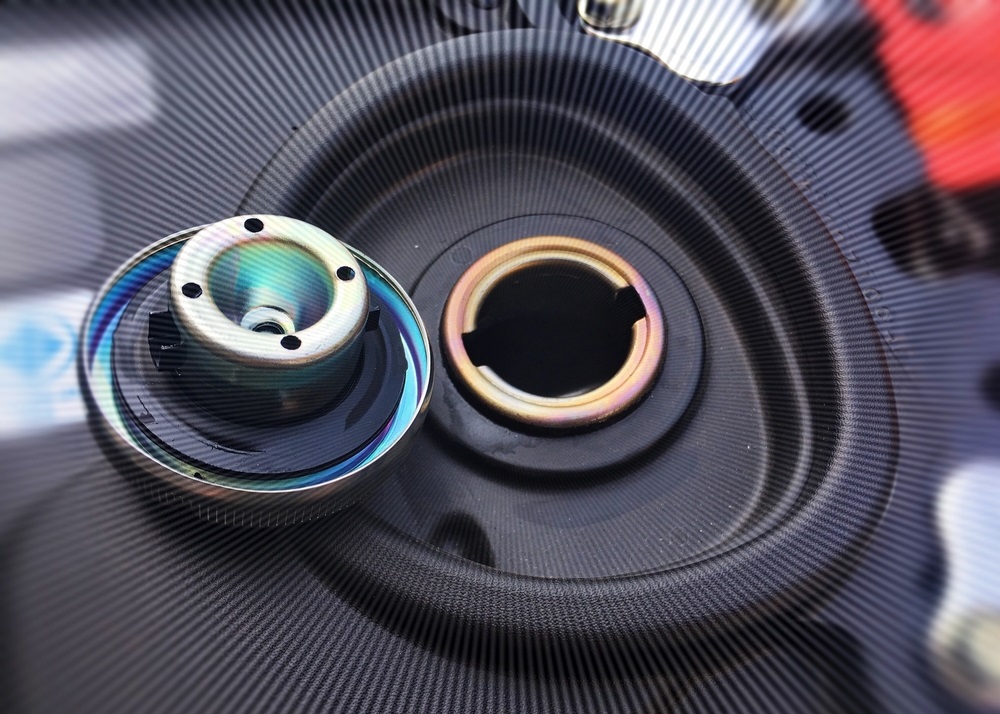
There are a few ways to check the DEF level:
Dashboard Warning Lights
Most trucks have a DEF-level warning light on the dashboard that will illuminate when the DEF tank runs low. This is usually a yellow or amber “check DEF” light. A red “low DEF” warning light will come on when the tank level becomes critically low. Please pay attention to these lights and refill DEF promptly when they first come on to prevent running out.
Physical Inspection
You can visually inspect the DEF tank to check the fluid level. DEF tanks are usually located under the passenger door behind a blue cap. Look at the level through the translucent tank walls. Level markings will be molded into the plastic tank showing full, half-full, low, etc. If the tank is low, plan to refill it soon.
Digital Gauge Reading
Many trucks have a digital DEF level gauge built into the dashboard display screen. This gauge shows the precise DEF fill level percentage. Check this gauge regularly to monitor the DEF supply. Try not to let it fall below 25-30% before refilling. Running the tank to nearly empty risks depleting the DEF supply, which could lead to engine problems.
By employing these techniques to check the DEF level on a regular basis, you may keep ahead of low fluid problems and prevent running out while driving. When indications suggest that the DEF is running low, take immediate action.
Adding DEF
Adding DEF to your truck is a straightforward process, but there are some important steps to follow.
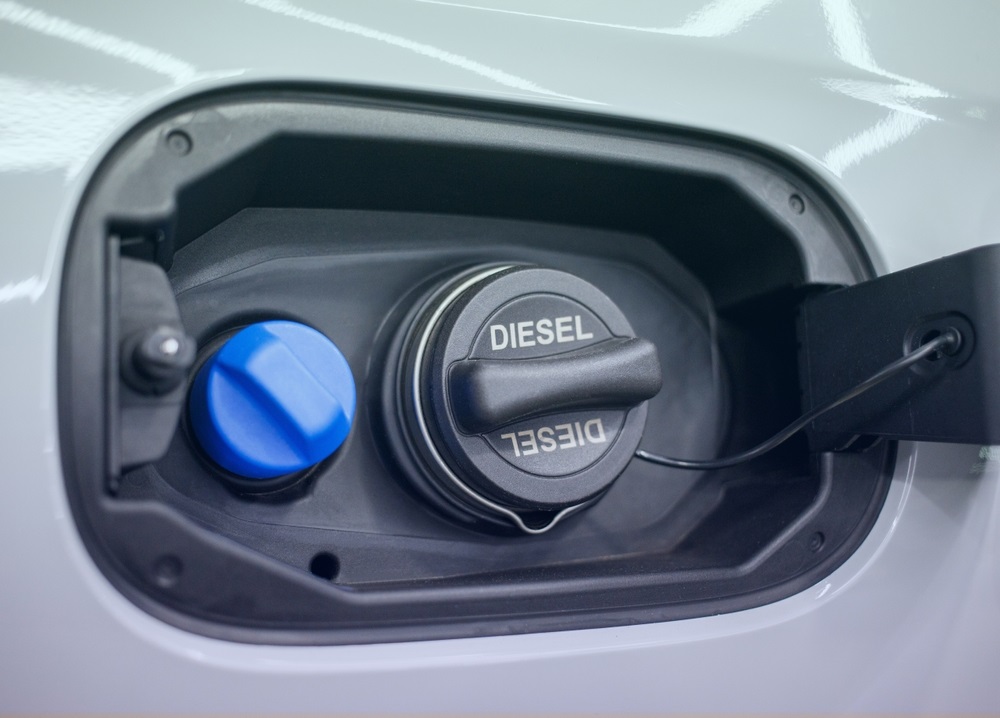
Locate the DEF Fill-inlet
The DEF tank will have a blue cap labeled “DEF.” It is often located near the regular diesel fuel inlet. Consult your owner’s manual if you need help finding it.
Remove the DEF Cap
Turn it counterclockwise to remove the cap. Set it aside somewhere clean so you can replace it later.
Add the DEF Fluid Slowly
Attach the DEF nozzle to the inlet and squeeze the handle slowly. Adding the fluid too quickly can cause spilling or overflowing. Go slowly to allow air bubbles to escape.
Avoid Spills
Have paper towels ready in case of minor spills. DEF stains, so you’ll want to wipe up any spills quickly. If you do get DEF on your skin, rinse with water.
Replace the DEF Cap
When the tank is full, remove the DEF nozzle and replace the cap by turning it clockwise. Tighten it securely.
Check the DEF Level Gauge
Start the engine and check that the DEF gauge shows a full level. Add a bit more if needed.
DEF Storage
Diesel exhaust fluid (DEF) should be stored properly to maintain quality and effectiveness.
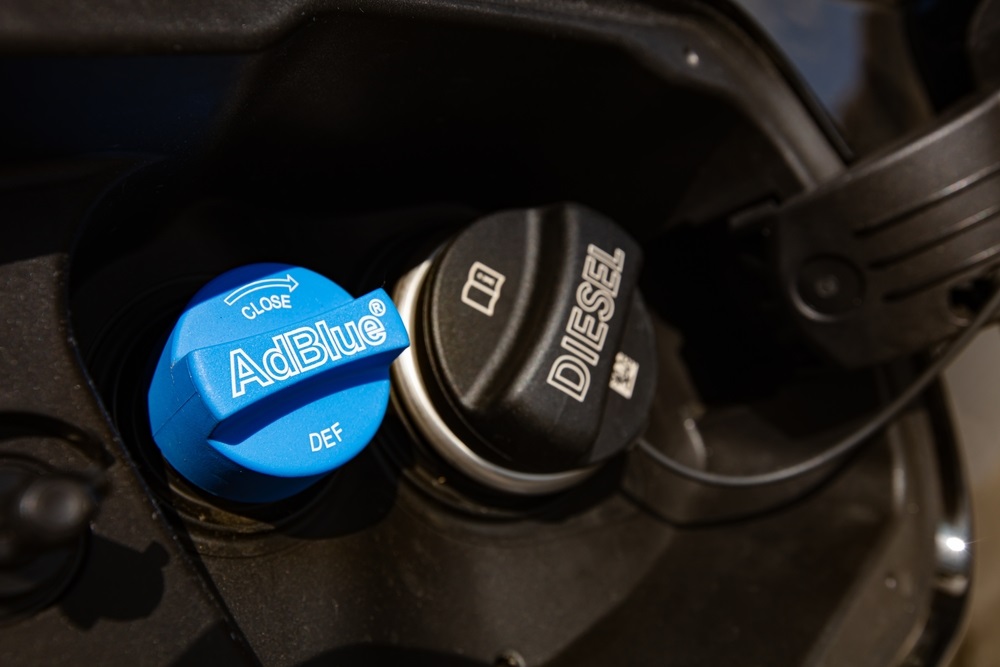
Here are some key tips for storing DEF:
- Store DEF in a cool, dry place. Avoid storing it somewhere that gets very hot, like a garage or shed exposed to direct sunlight. Heat can cause DEF to degrade more quickly.
- Keep DEF in its original container. Don’t transfer it to other non-approved containers, which could introduce contaminants. The original container is designed to store the DEF properly.
- Make sure to seal the container tightly after each use. Leaving the container open allows contaminants and moisture in, which can ruin the DEF over time. Replace the cap tightly.
- Check the expiration date on the DEF container periodically. While it can last up to 2 years in proper storage conditions, the quality can degrade over time. Replace expired DEF.
- Avoid storing DEF containers directly on concrete, as the urea can absorb moisture from concrete floors over time. Instead, place them on a shelf or pallet.
Properly storing DEF is important to maintain the quality and effectiveness of the emissions-reducing fluid. Following these simple storage guidelines will help avoid problems with contaminated or degraded DEF in the truck’s system.
DEF Handling Precautions
Diesel Exhaust Fluid (DEF) is generally safe to handle, but it’s important to take some basic precautions.
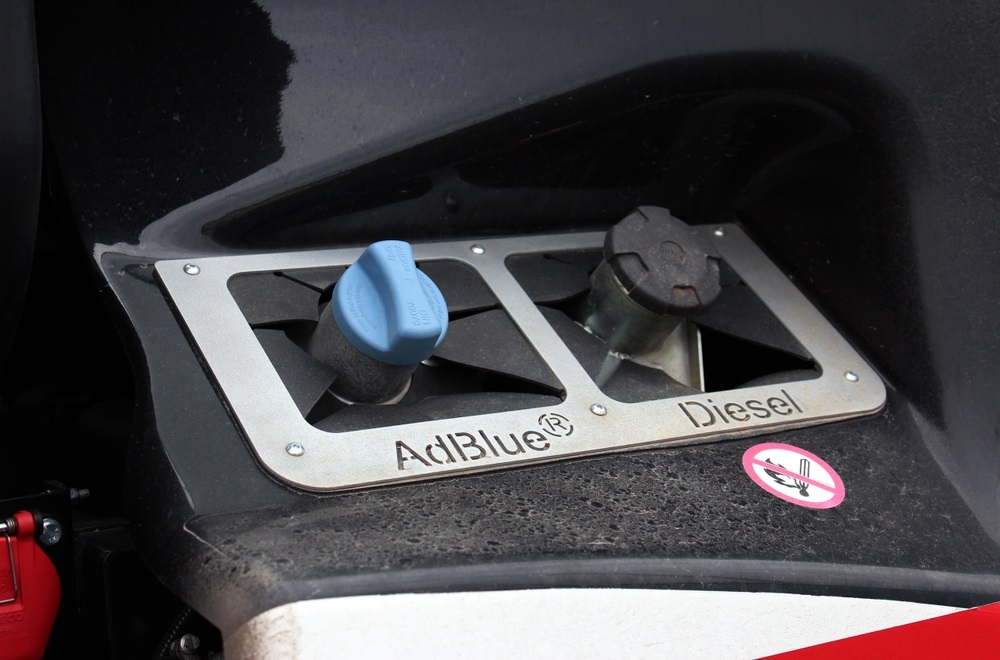
Steer clear of skin contact. Wear gloves and long sleeves because DEF might cause mild irritation. Any skin that comes into touch with DEF should be washed right away.
Put on safety goggles. When working with DEF, protective glasses or goggles should be worn to avoid unintentional eye splashing.
Use water to completely clean up spills. Use lots of water to clean up any DEF spills. When DEF dries, it may leave behind white crystals.
Get rid of rubbish the right way. Observe your local laws on the appropriate disposal of DEF.
When handled correctly, DEF is non-flammable and non-hazardous. By wearing gloves and eye protection and cleaning up spills properly, you can prevent irritation and ensure that DEF is managed safely. Taking precautions allows you to work with DEF while avoiding potential health effects.
Refilling Interval
The particular truck model and its intended operation will determine how often the DEF tank needs to be refilled. There’s no universal refill interval that works for every truck.
Some trucks may need the DEF tank topped off at every oil change, while others can go much longer between refills. For example, a truck driven long distances at highway speeds will consume DEF slower than a truck used for frequent stop-and-go deliveries in an urban area.
The vehicle owner’s manual is the best resource for determining the optimal DEF refilling interval. The manual outlines the manufacturer’s recommended refill intervals based on expected DEF consumption rates. Some manuals may provide refill intervals regarding mileage, while others specify a timeframe such as months or years.
It is important to keep the DEF tank from running completely empty between refills. Allowing the tank to run dry could cause the selective catalytic reduction (SCR) system to stop working properly, which could lead to various problems, from reduced engine performance to complete drivability issues.
Check the DEF gauge frequently and top off the tank as needed, following the instructions in your truck’s owner’s manual, to prevent any DEF-related issues. Be sure to refill before the tank is empty. Topping off the tank as part of routine maintenance is the best way to keep the SCR system functioning optimally.
Cost of DEF
Diesel Exhaust Fluid (DEF) can be expensive depending on the brand, quantity purchased, and location. Generally, buying DEF in bulk is the most cost-efficient option.
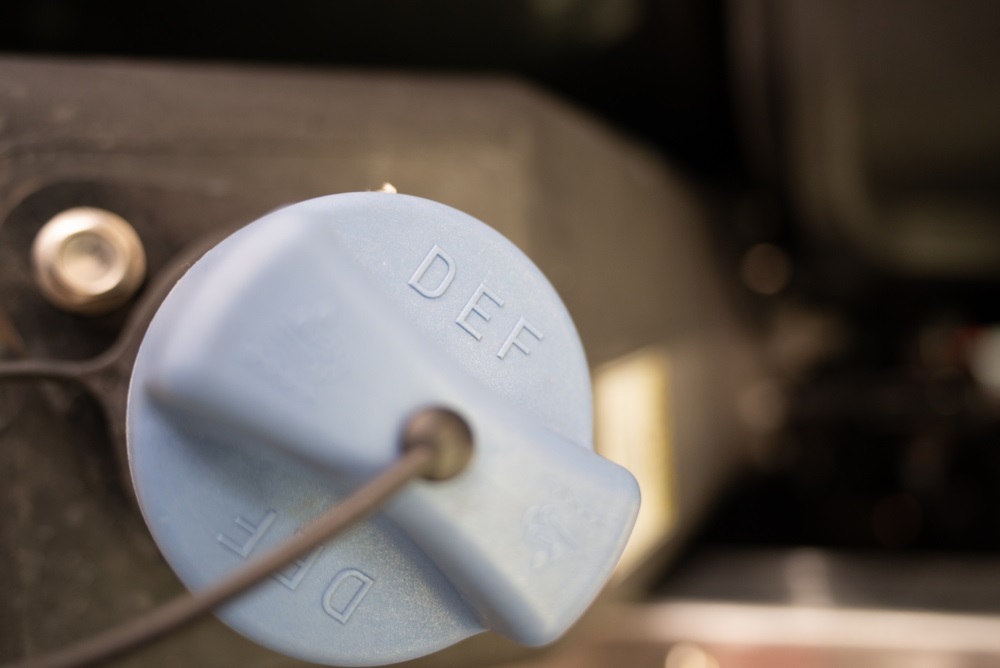
DEF prices typically range from $3-5 per gallon when purchased in bulk. Buying DEF by the gallon at truck stops, retailers, or auto parts stores tends to be more expensive. Expect to pay $8-12 per gallon when buying smaller quantities.
The most budget-friendly way to buy DEF is in bulk quantities of 2.5 gallons or larger. Many retailers sell DEF in bulk for around $3-4 per gallon. Buying a larger 55-gallon drum of DEF can reduce the price per gallon even further.
Prices are usually around $5 per gallon for 2.5-gallon jugs. Major truck stop chains like TA and Love’s also carry DEF, starting around $3.50/gallon for bulk quantities.
When estimating DEF costs, expect bulk pricing to be around $3-4 per gallon and smaller quantities to be $5-8 per gallon. Buying DEF in bulk and looking for promotional pricing can yield the best value. Proper storage is recommended when buying bulk DEF to maintain quality and prevent contamination.
FAQ
You asked, we answered:
What Tools Do I Need to Add DEF to My Truck?
To add DEF to your truck, you typically need the DEF itself, which comes in containers of varying sizes, and a funnel if your DEF container doesn’t come with a spout. Some newer trucks have direct fill systems that allow you to add DEF without the need for additional tools.
Where Is the DEF Tank Located?
The DEF tank on most trucks is located near the fuel tank. In many cases, it’s clearly marked with a blue cap to differentiate it from the diesel fuel cap, which is usually green or black. It’s important to locate and correctly identify your DEF tank before proceeding to add DEF to ensure that you do not accidentally fill the wrong tank.
How Do I Know When It’s Time to Add DEF to My Truck?
Your truck is likely equipped with indicators on the dashboard that will alert you when the DEF level is getting low. These notifications can include a warning light, a DEF level gauge, or a message on the display screen. It’s important to add DEF as soon as these indicators appear to ensure your truck operates efficiently and remains compliant with emission regulations.
How Much DEF Should I Add?
The amount of DEF you should add depends on your truck’s DEF tank capacity and the current level of DEF. It’s recommended to fill the tank up to the maximum fill line without overfilling. Overfilling can cause spills and potential damage to the vehicle’s paint or components.
Can I Add DEF to My Truck While the Engine Is Running?
It’s generally safe to add DEF to your truck while the engine is running, but it’s always best to turn off the engine if possible. This ensures safety and allows you to handle the DEF more carefully, reducing the risk of spills.
In Conclusion
In summary, cloudy or colored DEF fluid, crystallization, warning lights, and reduced performance all indicate a problem with the quality of the diesel exhaust fluid. Draining and replacing bad DEF as soon as issues are noticed will prevent damage to your truck’s emissions system. Schedule your deliveries with Azure DEF and add high quality diesel exhaust fluid to your truck today.
